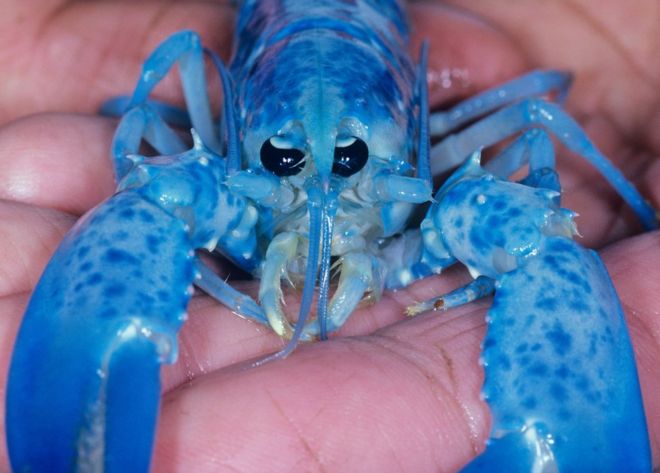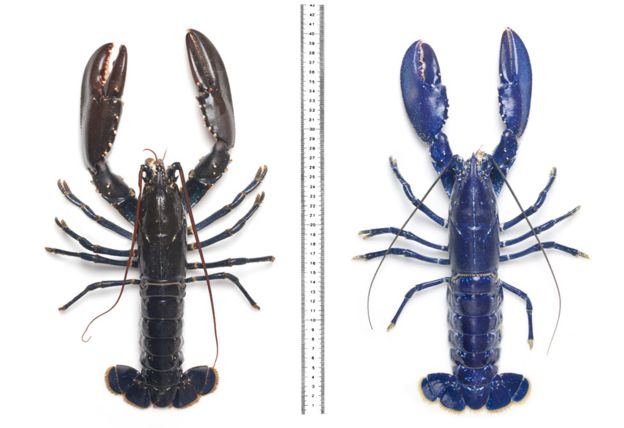
Blue lobster (Photo: Alamy)
Two Canadian fishermen have been celebrating catching bright blue lobsters over the last few days. But how rare are these striking-looking crustaceans, asks Justin Parkinson.
Lobsters caught off the Atlantic coast of North America aren't usually very bright. They tend to be a murky, greeny-brown... until they are boiled, when they turn the orangey-pink familiar to diners with high disposable incomes.
So two fishermen off the coast of Nova Scotia made the news when they caught not one, but two vivid blue lobsters in quick succession, 150km (93 miles) apart. Among the region's fishermen, it's traditionally considered to be a sign of good fortune.
The probability of the creature having this colouring is widely touted as being one in two million. The University of Maine Lobster Institute is among those to have quoted these odds in the past, though its executive director, Rob Bayer, admits they are merely a "guess".
"The chances of this happening nobody really knows," he says.
It's been suggested that the odds are one in two million. But these are largely a "guess", according to the US Lobster Institute.
David Spiegelhalter, professor for the public understanding of risk at Cambridge University in the UK, is inclined to pour a bit of cold water on the story.
A rough analysis of overall catch tonnages suggests that about 200 million lobsters are caught in the North Atlantic every year, he says. That equates to 100 blue ones turning up in a year on average, if the one-in-two-million odds are correct.
"So for two to be caught three days apart, quite close to each other, does not seem at all surprising," says Spiegelhalter. "I would imagine it happens most years."
Bright blue lobsters are so-coloured because of a genetic abnormality that causes them to produce more of a certain protein than others.

A regular European lobster, and (right) a blue one caught in Scotland in 2011. (Photo: Science Photo Library)
They stand out from the rest of a catch, particularly in western parts of the North Atlantic.
By: Who, What Why- The Magazine answers the questions behind the news.
Source: BBC





